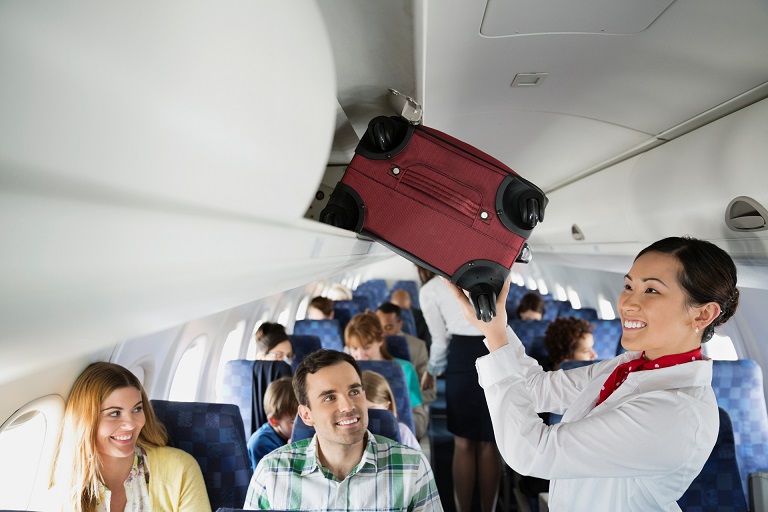Leaving for vacation is an exciting time for most people. But when you’re traveling with your pet, the excitement of boarding the airplane may be met with dread. Maybe you’re worried your pet will get sick during travel. Or perhaps you’re worried they’ll feel restless as they’re confined in their crate for the journey ahead.
Traveling with a pet doesn’t have to be a stressful experience — for you or your pet. Whether you’re traveling by car, train, or airplane, these five tips can help you prepare for a fun and stress-free journey.
1. Assess Their Health
Traveling can be a stressful event for your pet. The constant movement and changing environments can overwhelm their small bodies, which can lead to other health issues. Aside from motion sickness, travel can cause anxiety. Prolonged sitting, standing, or being confined can also lead to joint stiffness, muscle tension, and discomfort. Because of this, some animals may not be fit for traveling due to their age, medical history, and chronic conditions.
Before your pet joins you on your next adventure, it’s important to ensure that they’re in good health. Your vet can help determine if your pal is suited for the journey, or if they should stay home. A quick visit to the vet can also help you ensure you’re prepared and your animal can travel safely. Some destinations may require different vaccinations and preventative medications to keep your pet protected from common diseases in the area.
If you’re traveling on an airplane or abroad, you may also need certificates or documentation confirming your pet’s good health. For instance, when flying internationally, countries like Australia and the European Union often require an international health certificate. This documentation details your pet’s health status, vaccinations, and microchip information.
2. Find The Right Transportation Method
Traveling with a pet can not only be hard on them, but it can also be mentally straining for you. One important factor to consider is if your pet will travel with you, or if you’ll hire a pet transport service. A pet transport service has experience with many types of temperaments and medical conditions. Because of this, they’re able to ensure your pet stays safe and content on their journey.
While you may be ready to hop on a flight to get to your destination, your dog might not be allowed. Many airlines have specific regulations that restrict certain dog breeds from flying. This is especially true for those with short noses and respiratory issues, like bulldogs, pugs, and Boston terriers. They are often more susceptible to respiratory distress during air travel. Check with your airline about which pets are allowed to fly. You may have to travel separately, trusting a driver to safely deliver your pet.
If you decide to keep your pet with you during your travels, it’s important to keep them secure and comfortable. If you’re going to crate your pet, use an appropriately-sized carrier that offers plenty of ventilation and room to move. If you’re traveling by car, be sure to secure their carrier with a seat belt.
3. Pack Their Bags
Once you’ve gotten your vet’s approval and determined the best method of transport, it’s time to pack. Choose an easy-to-carry, durable bag, then start packing the essentials. Be sure to pack enough food for every day you’ll be on your trip, and extra, too. This way, if you run into any delays, you don’t have to worry about finding food. Also consider packing a few of their favorite treats. These can be used to reward them for behaving so well during the adventure.
Be sure to pack a collar with their I.D. tags. Even if your pet doesn’t wear them at home, you’ll want to pack this in case your pet wanders. Accidents happen, so you’ll also want to pack a small first-aid kit for your pet, including adhesive tape, and alcohol wipes. You should also pack any necessary medications, like flea and tick treatments, and prescription information in this kit.
Lastly, you’ll want to bring a piece of home with you to help comfort your pet. Pets are creatures of habit, and being away from their normal environment can be extremely overwhelming for them. Don’t forget to pack their favorite toy and their preferred bedding. The familiar scent of these items can provide a sense of security during unfamiliar travel experiences, reducing anxiety and stress.
4. Acclimate Your Pet For Travel
Being tossed into new situations can cause anxiety for anyone, but it’s especially common for pets. If your pet hasn’t spent much time in a crate or a vehicle, spend time getting them acclimated. Start by gradually introducing them to the crate or carrier they will be traveling in.
This can be done by creating positive associations with the crate, like feeding them near or inside it. You can also turn it into an appealing lounge space with blankets to help persuade them to go inside. After they get comfortable with the crate, slowly increase the amount of time they spend inside with the door closed.
If you’re traveling by car, you should also prepare your pet for the long ride. Start taking your pet on short trips, then, gradually increase the duration to help them acclimate. If your pet experiences increased anxiety or motion sickness while they’re in the car, consult your vet. They may be able to recommend strategies or prescribe medication to help.
5. Find Pet-Friendly Accommodations
Unfortunately, not all places are pet-friendly. Before you resort to sneaking your pet inside, do some research to find pet-friendly options. Specifically look for places that have amenities, like pet-friendly rooms, designated areas for pets to run, or walking trails. Once you’ve found a place to stay, be sure to book your room in advance. Many pet-friendly accommodations fill up quickly, especially if you’re traveling during the destination’s peak season.
While you’re scheduling your stay, be sure to confirm the details. Some places may charge pet fees and deposits, or they could have size and breed restrictions. Double-check these details, so you’re taken by surprise at check-in.
With the proper planning, traveling with your pet can be a rewarding experience. With the help of your vet and proper research, you and your furry companion can have an enjoyable vacation to remember.








Add Comment